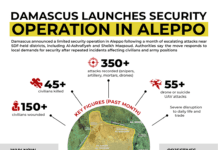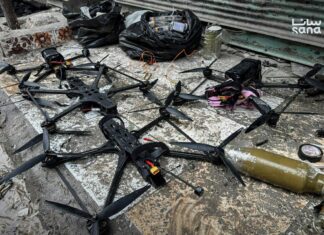
The oil and gas fields of northeast Syria remain at the center of controversy as allegations of years mismanagement, theft and environmental damage continue to mount against the Syrian Democratic Forces (SDF) and the Autonomous Administration of North and East Syria (AANES).
British company Gulfsands Petroleum, holding oil concession in Hasakah, said more than 55 million barrels of oil and gas equivalent worth $3.85 billion have been “unlawfully extracted” from the site since 2017.
Gulfsands Managing Director John Bell said production is controlled by “entities affiliated with the AANES, YPG and SDF” and is routed into black-market networks, depriving Syrians of legitimate revenue. He warned that unregulated techniques are polluting soil and water, leading to respiratory illness, skin conditions and cancer.
Sanctions and Allegations of Complicity
Concerns extend beyond environmental and economic costs. A 2019 report by the Syrian Network for Human Rights (SNHR) accused the SDF of breaching US and European sanctions by selling crude to the Assad regime, which was under international embargo. SNHR estimated that SDF-held fields produce around 14,000 barrels per day, generating more than $378 million annually, with sales to Assad at about $30 a barrel.
The group warned that some proceeds may have been diverted to the Kurdistan Workers’ Party (PKK), designated a terrorist organization by the US and EU. The report concluded that such transfers “constitute complicity in supporting the [Assad] regime’s crimes” and called for investigations into how the oil revenues are used.
Continuing Monopoly
While the SDF has agreed to provide oil to the new Syrian government, following Assad’s ouster, in extending a three-month agreement to ship crude and gas from Hasakah and Deir Ezzor to Homs and Baniyas—the bulk of the SDF’s oil trade and revenues remain undeclared. Sources confirmed that daily transfers exceeded 15,000 barrels of crude and up to one million cubic meters of gas, though field management remains with the AANES.
Technical staff at Rmelan said production has fluctuated but remains above 50,000 barrels per day, with some estimates exceeding 100,000 before recent disruptions. Much of this oil is refined locally and sold through AANES-run stations.
A Call for Central Oversight
Gulfsands has urged the unification of Syria’s energy industry under central government control, arguing that transparent management could boost production from 80,000 to 500,000 barrels per day, generating billions in legal revenue. The company has promoted “Project Hope,” an initiative proposing international oversight of energy revenues to finance humanitarian relief and reconstruction.
Meanwhile, the United Nations Office for the Coordination of Humanitarian Affairs reports that 16.7 million Syrians require aid and 90% continue to live below the poverty line. Advocates argue that lawful oil revenues could help offset the country’s deepening humanitarian crisis.
As disputes continue, the fate of Syria’s oil wealth remains uncertain—tied up in regional power struggles and allegations of systemic theft that have left ordinary Syrians with little benefit from one of their country’s most valuable resource.








